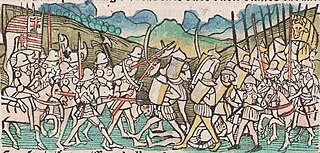 W
WThe Battle of Baia was fought on December 15, 1467, between the Moldavian prince, Stephen the Great and the Hungarian king, Matthias Corvinus. The battle was the last Hungarian attempt to subdue Moldavia, as previous attempts had ended in failure. Corvinus invaded Moldavia as a consequence of Stephen's annexation of Chilia—a fortress and harbour on the coast of the Black Sea—from Hungarian and Wallachian forces. It had belonged to Moldavia centuries earlier.
 W
WThe Battle of Călugăreni was a battle in the history of early modern Romania. It took place on 23 August [O.S. 13 August] 1595 between the Wallachian army led by Michael the Brave and the Ottoman army led by Koca Sinan Pasha. It was part of the Long War, fought between Christian and Ottoman forces at the end of the 16th – beginning of the 17th centuries.
 W
WThe Battle of Drakenburg took place on 23 May 1547 to the north of Nienburg, between the Protestant army of the Schmalkaldic League and the imperial troops of Eric II, Duke of Brunswick-Lüneburg, Prince of Calenberg. It resulted in an imperial defeat. Eric was forced to swim over the Weser River to save his own life. As a consequence, the imperialists left northern Germany, contributing to freedom of religion for Lutherans and Catholics in northern Germany.
 W
WAccording to the dubious Chronicle of the Priest of Duklja, a Magyar leader named Kisa led an invasion into Bosnia, where he was decisively defeated by Časlav, the Prince of Serbia, somewhere on the Drina. Kisa's widow requested from the Magyar chief to give her another army to avenge his death. With an "unknown number" of troops, the widow went for Časlav, encountering him somewhere in Syrmia. In the night, the Magyars attacked the Serbs, captured Časlav and all of his male relatives. On the command of the widow, all of them were bound by their hands and feet and thrown into the Sava river. Vladimir Ćorović dates this event to c. 960.
 W
WThe Battle of Focșani was a battle in the Russo-Turkish War (1787–1792) fought on 1 August 1789 between the Ottoman Empire and the alliance of the Russian Empire and the Habsburg Monarchy near Focșani, Moldavia. The Russians were led by Alexander Suvorov, the Austrians by Prince Josias of Coburg, and the Ottomans by Osman Pasha.
 W
WThe Battle of Győr took place during the Summer Campaign of the Hungarian War of Independence. It was fought from 1848 to 1849 in the Hungarian city of Győr. The Hungarian Revolutionary Army was led by General Ernő Poletenberg and General Artúr Görgei. The Austrian Empire was led by Julius Jacob von Haynau, with assistance from a Russian division led by Feodor Sergeyevich Panyutyin.
 W
WThe Battle of Hatvan was the first battle in the Spring Campaign of the Hungarian War of Independence of 1848–1849, fought on 2 April 1849 between the Habsburg Empire and the Hungarian Revolutionary Army. This battle was the start of the Hungarian offensive whose aim was to liberate central and western Hungary, and its capital, from imperial occupation. The Austrian force was commanded by General Franz Schlik, while the Hungarians were led by Colonel András Gáspár, and lieutenant-colonel Ernő Poeltenberg. The Polish Legion under Colonel Józef Wysocki also fought alongside the Hungarians. The Hungarians were victorious, and advanced towards the Hungarian capitals, Buda and Pest.
 W
WThe Battle of Humenné took place on 22–23 November 1619 near Humenné during the first period of the Thirty Years' War between the Transylvanian army and the joined loyalist Hungarian and Polish forces of Lisowczycy. It was the only battle of that war to involve the Polish–Lithuanian Commonwealth.
 W
WThe Battle of Isaszeg took place in the Spring Campaign of the Hungarian War of Independence from 1848 to 1849, between the Austrian Empire and the Hungarian Revolutionary Army supplemented by Polish volunteers. The Austrian forces were led by Field Marshal Alfred I, Prince of Windisch-Grätz and the Hungarians by General Artúr Görgei. The battle was one of several engagements between the Hungarian Revolutionary Army and the Imperial counter-revolutionary main army and was one of the turning points of the Hungarian War of Independence.
 W
WThe Battle of Kápolna was a battle in the Hungarian Revolution of 1848, fought on 26 and 27 February 1849. The battle ended with Austrian victory and influenced the politics of central Europe: Franz Joseph I announced the March Constitution of Austria on 4 March 1849.
 W
WThe Battle of Keresztes took place on 24–26 October 1596. It was fought between a combined Habsburg-Transylvanian force and the Ottoman Empire near the village of Mezőkeresztes in northern Hungary. The Ottomans routed the Habsburg-led army but Ottoman casualties were too high for them to pursue.
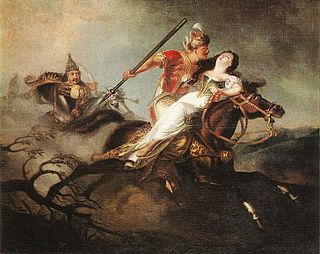 W
WThe Battle of Kerlés or Battle of Chiraleș, also known as the Battle of Cserhalom, was an engagement between an army of Pechenegs and Ouzes commanded by Osul and the troops of King Solomon of Hungary and his cousins, Dukes Géza and Ladislaus, in Transylvania in 1068. The Pechenegs had been the dominant power of the westernmost regions of the Eurasian steppes since around 895. However, large Pecheneg groups moved to the Balkan Peninsula at the same time as the westward migration of the Ouzes and Cumans in the 1040s. The first recorded Pecheneg invasion of Transylvania occurred during the reign of Stephen I of Hungary.
 W
WThe Battle of Köbölkút was fought on August 5, 1663 as part of the Austro-Turkish War (1663–1664), between a Habsburg army and an Ottoman army under the command of Grand Vizier Köprülü Fazıl Ahmed. The battle took place near Köbölkút, Kingdom of Hungary and was an absolute Ottoman victory.
 W
WThe First battle of Komárom was one of the most important battles of the Hungarian War of Independence, fought on 26 April 1849, between the Hungarian and the Austrian Imperial main armies, which some consider ended as a Hungarian victory, while others say that actually it was undecided. This battle was part of the Hungarian Spring Campaign. After the revolutionary army attacked and broke the Austrian siege of the fortress, the Imperials, having received reinforcements which made them numerically very superior to their enemies, successfully counterattacked, but after stabilising their situation, they retreated towards Győr, leaving the trenches and much of their siege artillery in Hungarian hands. By this battle the Hungarian revolutionary army relieved the fortress of Komárom from a very long imperial siege, and forced the enemy to retreat to the westernmost margin of the Kingdom of Hungary. After this battle, following a long debate among the Hungarian military and political leaders about whether to continue their advance towards Vienna, the Habsburg capital, or towards the Hungarian capital, Buda, whose fortress was still held by the Austrians, the second option was chosen.
 W
WThe Second Battle of Komárom, also known as the Battle of Ács, took place on July 2, 1849, between the Hungarian Revolutionary Army and the Imperial Austrian Army of the Austrian Empire ; a contingent of almost 12,000 Russian Empire troops was led by Lieutenant General Fyodor Sergeyevich Panyutyin. The Austrian army outnumbered the Hungarian troops two to one, and had a multitude of infantry, light infantry, heavy cavalry (cuirassiers), and better weapons. The Hungarians, except for the Landwehr [Hungarian: Honvéd] and the hussars, had few types of military units. Other problems also negatively impacted the Hungarian army. The Lajos Kossuth government decided to withdraw the Hungarian troops from Komárom to southern Hungary without consulting Görgei, the war minister, the only one authorised to make a military decision. Görgei grudgingly agreed to the decision, fixing the date of departure for southern Hungary to 3 July. Uncertainty and conflicts existed among the Hungarian officers and soldiers before the attack. Kossuth sent Lieutenant General Lázár Mészáros to Komárom to relieve Görgei of leadership and send him to Pest. When Mészáros approached Komárom by steamboat on 2 July, however, he heard gunfire from the battle and returned to Pest.
 W
WThe Battle of Koroncó took place on 13 June 1704 at Koroncó in Moson County, Hungary between the Kurucs (Hungarians) and the army of Habsburg Empire. The Kuruc army was defeated in the battle. Although the Austrian army retired to Austria after the battle, the Kuruc positions in the Dunántúl remained uncertain until 1705 because the fiasco near Koroncó.
 W
WThe Battle of Kressenbrunn was fought in July 1260 near Groissenbrunn in Lower Austria between the Kingdom of Bohemia and the Kingdom of Hungary for the possession of the duchies of Austria and Styria. The Bohemian forces were led by King Ottokar II Přemysl, while the Hungarians were led by King Béla IV.
 W
WThe Battle of Kunovica or Battle at Kunovitsa was the battle between crusaders led by John Hunyadi and armies of the Ottoman Empire which took place on 2 or 5 January 1444 near mountain Kunovica between Pirot and Niš.
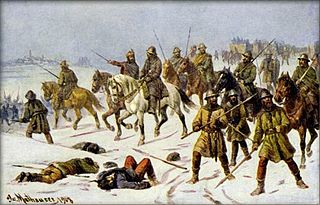 W
WThe Battle of Kutná Hora (Kuttenberg), an early battle and subsequent campaign in the Hussite Wars, was fought on 21 December 1421 between German and Hungarian troops of the Holy Roman Empire and the Hussites, an early ecclesiastical reformist group that was founded in what is now the Czech Republic.
 W
WThe Battle of Leobersdorf was a battle fought near Leobersdorf on 19 September 1532, as part of the Habsburg-Ottoman War (1526–1568).
 W
WThe Battle on the Marchfeld at Dürnkrut and Jedenspeigen took place on 26 August 1278 and was a decisive event for the history of Central Europe for the following centuries. The opponents were a Bohemian (Czech) army led by the Přemyslid king Ottokar II of Bohemia and the German army under the German king Rudolph I of Habsburg in alliance with King Ladislaus IV of Hungary. With 15,300 mounted troops, it was one of the largest cavalry battles in Central Europe during the Middle Ages. The Hungarian cavalry played a significant role in the outcome of the battle.
 W
WOperation Margarethe was the occupation of Hungary by Nazi German forces during World War II, as it was ordered by Hitler on 12 March 1944. A plan for the occupation of Romania was devised under the name Operation Margarethe II but was never carried out.
 W
WThe Battle of Ménfő was an important battle in the early history of the Kingdom of Hungary. Fought in 1044 at Ménfő, near Győr, between an army of mostly Germans and Hungarians (Magyars), it was a victory for the Germans and thus for Westernising influences in Hungary.
 W
WThe Battle of Mogyoród took place on 14 March 1074. It was an internal conflict between Solomon, King of Hungary and his cousins duke Géza and Ladislaus, who were claiming rights to the throne.
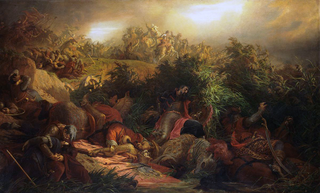 W
WThe Battle of Mohács was one of the most consequential battles in Central European history. It was fought on 29 August 1526 near Mohács, Kingdom of Hungary, between the forces of the Kingdom of Hungary and its allies, led by Louis II, and those of the Ottoman Empire, led by Suleiman the Magnificent. The Ottoman victory led to the partition of Hungary for several centuries between the Ottoman Empire, the Habsburg Monarchy, and the Principality of Transylvania. Further, the death of Louis II as he fled the battle marked the end of the Jagiellonian dynasty in Hungary and Bohemia, whose dynastic claims passed to the House of Habsburg. The Battle of Mohács marked the end of the Middle Ages in Hungary.
 W
WThe Battle of Mohi, also known as Battle of the Sajó River or Battle of the Tisza River, was the main battle between the Mongol Empire and the Kingdom of Hungary during the Mongol invasion of Europe. It took place at Muhi, southwest of the Sajó River.
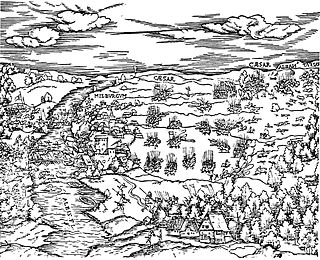 W
WThe Battle of Mühlberg took place near Mühlberg in the Electorate of Saxony in 1547, during the Schmalkaldic War. The Catholic princes of the Holy Roman Empire led by the Holy Roman Emperor Charles V decisively defeated the Lutheran Schmalkaldic League of Protestant princes under the command of Elector John Frederick I of Saxony and Landgrave Philip I of Hesse.
 W
WThe Battle of Nagysalló, fought on 19 April 1849, was one of the battles between the Habsburg Empire and the Hungarian Revolutionary Army during the Spring Campaign in the Hungarian War of Independence from 1848–1849, fought between the Habsburg Empire and the Hungarian Revolutionary Army. Until 1918 Nagysalló was part of the Kingdom of Hungary; nowadays it is a village in Slovakia, its Slovakian name being Tekovské Lužany. This was the second battle in the second phase of the campaign, whose aim was to break the imperial siege of the fortress of Komárom and at the same time encircle the Habsburg imperial forces headquartered in the Hungarian capitals of Buda and Pest. The Hungarians routed the imperial corps led by Lieutenant General Ludwig von Wohlgemuth, which had come from the Habsburg Hereditary Lands, to help the imperial army sent to suppress the Hungarian Revolution of 1848 and independence.
 W
WBetween 1941 and 1944, Romania held control over much of the Ukrainian Black Sea coast East of the Crimea. This was acquired during Operation Barbarossa. The Romanian conquest of the Soviet Western Black Sea coast started in July 1941 during Operation München and ended in October that year, after the Siege of Odessa. In the aftermath of these actions, Romania acquired two new sectors of coastline: the Bessarabian coast and the Transnistrian Coast. The latter was lost in April 1944, but the former was successfully defended until August 1944.
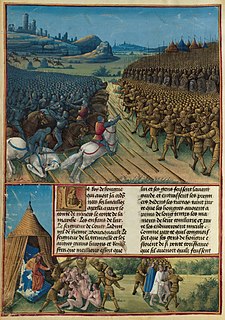 W
WThe Battle of Nicopolis took place on 25 September 1396 and resulted in the rout of an allied crusader army of Hungarian, Croatian, Bulgarian, Wallachian, French, Burgundian, German, and assorted troops at the hands of an Ottoman force, raising the siege of the Danubian fortress of Nicopolis and leading to the end of the Second Bulgarian Empire. It is often referred to as the Crusade of Nicopolis as it was one of the last large-scale Crusades of the Middle Ages, together with the Crusade of Varna in 1443–1444.
 W
WThe Battle of Nikolayevka was the breakout of Italian forces in January 1943, as a small part of the larger Battle of Stalingrad. The breakout involved the Mountain Corps of the Italian 8th Army near the village of Nikolayevka.
 W
WOperation Panzerfaust was a military operation undertaken in October 1944 by the German Wehrmacht to ensure the Kingdom of Hungary would remain a German ally in World War II. When German dictator Adolf Hitler received word that Hungary's Regent, Admiral Miklós Horthy, was secretly negotiating his country's surrender to the advancing Red Army, he sent commando leader Otto Skorzeny of the Waffen-SS and former special forces commander Adrian von Fölkersam to Hungary. Hitler feared that Hungary's surrender would expose his southern flank, where the Kingdom of Romania had just joined with the Soviets and cut off a million German troops still fighting the Soviet advance in the Balkan peninsula. The operation was preceded by Operation Margarethe in March 1944, which was the occupation of Hungary by German forces, which Hitler had hoped would secure Hungary's place in the Axis powers.
 W
WThe Ottoman invasion of Otranto occurred between 1480 and 1481 at the Italian city of Otranto in Apulia, southern Italy. Forces of the Ottoman Empire invaded and laid siege to the city and its citadel. According to a traditional account, more than 800 inhabitants were beheaded after the city was captured. The Martyrs of Otranto are still celebrated in Italy. A year later the Ottoman garrison surrendered the city following a siege by Christian forces and the intervention of Papal forces led by the Genoese Paolo Fregoso.
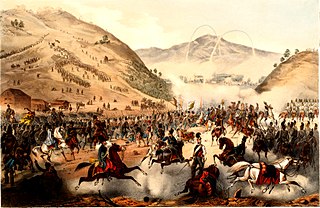 W
WThe Battle of Pákozd was a battle in the Hungarian Revolution of 1848, fought on the 29 September 1848 in the Pákozd – Sukoró – Pátka triangle. It was the first and one of the most important battles of the revolution, in which the Hungarian revolutionary army led by Lieutenant-General János Móga clashed with the troops of the Croatian Ban Josip Jelačić.
 W
WThe Battle of Pered, fought on 20–21 June 1849, was one of the battles which took place in the Summer Campaign of the Hungarian War of Independence from 1848 to 1849, fought between the Hungarian Revolutionary Army and the Habsburg Empire helped by Russian troops. The Hungarian army was led by General Artúr Görgei, while the imperial army by Lieutenant field marshal Julius Jacob von Haynau. After several preliminary minor battles of the Hungarian and Austrian troops along the Vág river, in which the attacking Hungarians could not achieve a success, Görgei took the command of his troops, and after receiving reinforcements, at 20 June, put his troops to attack again towards West. Although the II. Hungarian army corps occupied in heavy fights the village of Pered, the other two corps were unsuccessful, and could not advance. The angered Görgei removed the commander of the III. corps, General Károly Knezić because of his inactivity, and Colonel Lajos Asbóth, the commander of the II. corps who, in contrast to Knezić, was the only commander who successfully accomplished his duties. While Knezić's place was taken by Colonel Károly Leiningen-Westerburg, who was a great choice, Asbóth's place was taken by Colonel József Kászonyi, who was an explicitly bad choice. Haynau, who in the first day of the battle was moving the bulk of his troops to cross the Danube in order to start an attack on its southern bank, sent three of his corps, which were still on the northern bank, to repel the Hungarian forces. The two Austrian and one Russian (Panyutin's) corps started their attack at 21 June, and forced the Hungarians to retreat from Pered and Zsigárd, which forced Görgei to order his troops to retreat from the battlefield.
 W
WThe Battle of Petrovaradin also known as the Battle of Peterwardein, took place on 5 August 1716 during the Austro-Turkish War when the Ottoman army besieged the Habsburgs-controlled fortress of Petrovaradin on the Military Frontier of the Habsburg Monarchy. The Ottomans attempted to capture Petrovaradin, the so-called Gibraltar on the Danube, but experienced a great defeat by an army half the size of their own, similar to the defeat they had experienced in 1697 at Zenta. Ottoman Grand Vizier Damad Ali Pasha was fatally wounded while the Ottoman army lost 20,000 men and 250 guns to the Christian army led by Field Marshal Prince Eugene of Savoy.
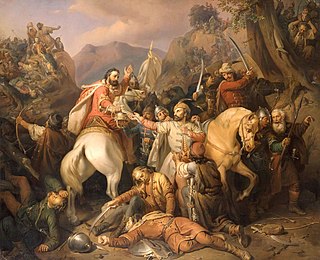 W
WThe Battle of Posada was fought between Basarab I of Wallachia and Charles I of Hungary.
 W
WThe Battle of Pressburg or Battle of Pozsony, or Battle of Bratislava was a three-day-long battle, fought between 4–6 July 907, during which the East Francian army, consisting mainly of Bavarian troops led by Margrave Luitpold, was annihilated by Hungarian forces.
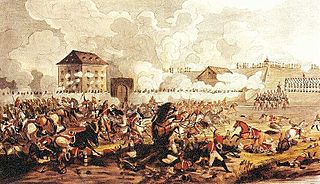 W
WThe Battle of Raab or Battle of Győr was fought on 14 June 1809 during the Napoleonic Wars, between Franco-Italian forces and Habsburg forces. The battle was fought near Győr (Raab), Kingdom of Hungary, and ended in a Franco-Italian victory. The victory prevented Archduke John of Austria from bringing any significant force to the Battle of Wagram, while Prince Eugène de Beauharnais's force was able to link up with Emperor Napoleon at Vienna in time to fight at Wagram. Napoleon referred to the battle as "a granddaughter of Marengo and Friedland", as it fell on the anniversary of those two battles.
 W
WThe Battle of Riade or Battle of Merseburg was fought between the troops of East Francia under King Henry I and the Magyars at an unidentified location in northern Thuringia along the river Unstrut on 15 March 933. The battle was precipitated by the decision of the Synod of Erfurt to stop paying an annual tribute to the Magyars in 932.
 W
WThe Battle of Rozgony or Battle of Rozhanovce was fought between King Charles Robert of Hungary and the family of Palatine Amade Aba on 15 June 1312, on the Rozgony field. Chronicon Pictum described it as the "most cruel battle since the Mongol invasion of Europe". Despite many casualties on the King's side, his decisive victory brought an end to the Aba family's rule over the eastern Kingdom of Hungary, weakened his major domestic opponent Máté Csák III, and ultimately secured power for Charles Robert of Hungary.
 W
WThe Battle of Saint Gotthard, of the Austro-Turkish War (1663–1664), took place on 1 August 1664 on the Raab between Mogersdorf and the Cistercian monastery St. Gotthard in German West Hungary. It was fought between Imperial Army forces, including Germans, Swedish and French contingents, led by Imperial Commander in Chief Count Raimondo Montecuccoli and the army of the Ottoman Empire under the command of Köprülü Fazıl Ahmed Paşa.
 W
WThe Battle of Schwechat was a battle in the Hungarian Revolution of 1848, fought on 30 October 1848 between the revolutionary Hungarian Army against the army of the Austrian Empire, in Schwechat, near Vienna. This was the last battle of 1848 in the Transdanubian campaign. The Hungarian Army was under the command of János Móga and the Austrian Army was under the command of Alfred I, Prince of Windisch-Grätz.
 W
WThe Battle of Segesvár was a battle in the Hungarian Revolution of 1848, fought on 31 July 1849 between the Hungarian revolutionary army supplemented by Polish volunteers under the command of General Józef Bem and the Russian V Corps under General Alexander von Lüders in ally with the Austrian army led by General Eduard Clam-Gallas. The battle was won by the Russian-Austrian army and it is presumed that the Hungarian poet and national hero Sándor Petőfi died in the battlefield, though his body was never found.
 W
WThe Battle of Șelimbăr, or Battle of Sellenberk, took place on 18 October 1599 between the Romanian army of Michael the Brave and the Transylvanian-Hungarian army of Andrew Báthory. The battle was fought near the village of Șelimbăr close to Sibiu.
 W
WThe Battle of Southern Buh occurred near the banks of the eponymous river. The result was a great Bulgarian victory which forced the Magyars of the Etelköz realm to abandon the steppes of southern Ukraine, as well as their aspirations of subduing Danube Bulgaria, retreating to the newly occupied lands beyond the Carpathian Mountains, centering on Pannonia, from where they will stage their next war, against Moravians this time, defeating them and establishing a new Hungary, after the Etelköz state in modern Ukraine, which succeeded an earlier stage of statehood for the Magyars, the legendary although short-lived Levedia, and even one before that, in the actual country of origin for the Magyars, Yugra, beyond river Ob.
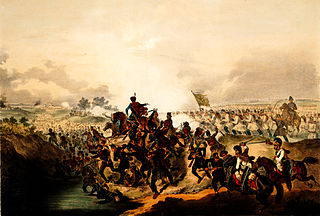 W
WThe Battle of Temesvár was a battle in the Hungarian Revolution of 1848, fought on 9 August 1849 between the Austrian Empire and Hungarian Revolutionary Army supplemented by Polish volunteers and was the last battle of the war. The Austrians were led by Julius Jacob von Haynau, while the Hungarians were led by Józef Bem who arrived at the eleventh hour from Transylvania. The Austrians were victorious.
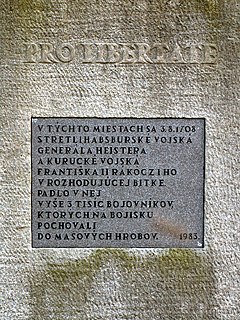 W
WThe Battle of Trenčín or Battle of Trencsén was a battle between the Hungarian Kuruc forces of Francis II Rákóczi and the Imperial Army of the Habsburgs. It was part of Rákóczi's eight-year-long War of Independence.
 W
WThe Battle of Vác, fought on 10 April 1849, was one of two important battles which took place in Vác during the Spring Campaign of the Hungarian War of Independence between the Austrian Empire and the Hungarian revolutionary army. The battle was the starting point of the second phase of the Spring Campaign, during which the Hungarians planned to relieve the fortress of Komárom from an Austrian siege, and to encircle the Austrian forces headquartered in the Hungarian capitals of Buda and Pest.
 W
WThe Battle of Varna took place on 10 November 1444 near Varna in eastern Bulgaria. The Ottoman Army under Sultan Murad II defeated the Hungarian–Polish and Wallachian armies commanded by Władysław III of Poland, John Hunyadi and Mircea II of Wallachia. It was the final battle of the Crusade of Varna.
 W
WThe Vienna offensive was launched by the Soviet 2nd and 3rd Ukrainian Fronts in order to capture Vienna, Austria, during World War II. The offensive lasted from 16 March to 15 April 1945.
 W
WThe Battle of Vítkov Hill was a part of the Hussite Wars. The battle pitted the forces of Sigismund, Holy Roman Emperor, against Hussite forces under command of Jan Žižka. Vítkov Hill was located on the edge of the city of Prague and the battle occurred in a vineyard established by Sigismund's father, Charles IV. It ended with a decisive Hussite victory.
 W
WThe Battle of Zenta, also known as the Battle of Senta, was fought on 11 September 1697, near Zenta, Ottoman Empire, between Ottoman and Holy League armies during the Great Turkish War. The battle was the most decisive engagement of the war, and it saw the Ottomans suffer an overwhelming defeat by an Imperial force half as large sent by Emperor Leopold I.
 W
WBattle of Zsibó was fought on 15 November 1705 between the Kuruc (Hungarian) army and forces of the Habsburg Empire, Kingdom of Denmark and Vojvodian Serbs in Zsibó, Principality of Transylvania. The Austrian marshal Ludwig Herbeville marched against Transylvania. Although the Kuruc-French army was equal in size to the combined Austrian, Danish and Serbian forces, Francis II Rákóczi went on the defense due to the inferior training of his troops. The Danes and Austrians launched a powerful attack on the French and Kuruc infantry. Although the Kuruc infantry held its ground, the Kuruc cavalry could not launch an attack due to a lack of leadership and an overly muddy battlefield. The Austrian cavalry was thus capable of flanking the Hungarians on the left, forcing the Hungarians to retreat and crushing their cavalry in the process. After the battle, the combined Austrian-Danish army bought Transylvania.